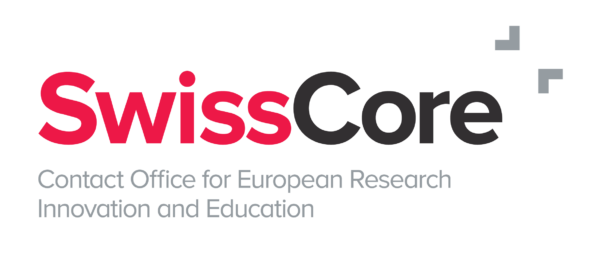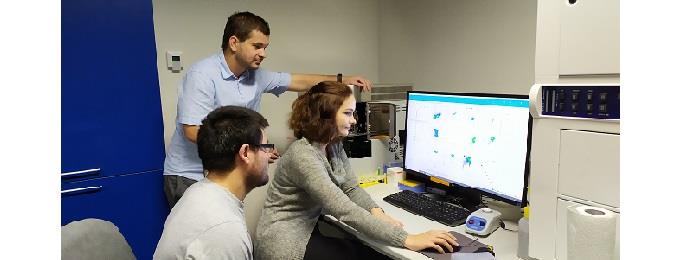Experimental immunologist Ondrej Štěpánek holds a prestigious ERC grant, building on a unique Swiss fund for Eastern European scientists.
In 2020, Central and Eastern European countries are more deeply engaged in European research activities than ever before. However, ‘brain drain’ still represents a major issue, and the participation in European Framework programmes is still highly uneven among EU Member States and Associated Countries. Horizon Europe, the upcoming EU framework programme for research, will therefore allocate at least 3.3% of its budget to so-called “widening measures”. This represents almost a fourfold increase in terms of absolute value, compared to the ongoing research framework programme Horizon 2020.
Already back in 2016, the Swiss National Science Foundation (SNSF) established a specific funding programme to strengthen independent and excellent research in Eastern Europe. The initiative called ‘Promotion of Young Scientists in Eastern Europe’ (PROMYS) is aimed at promising early career researchers from Eastern and Central European who intend to continue their scientific careers in one of the EU’s youngest Member States, under the condition that those scientists have studied or worked in Switzerland for at least two years. According to Evelyne Glättli from the SNSF, PROMYS gives Central and Eastern European countries more visibility in the European Research Area, which increases the competitiveness of the continent as a whole. After the first call in 2016, seven PROMYS grants were allocated to researchers from Romania, Croatia, Hungary and the Czech Republic for a project duration of five years. Taken together, they are worth CHF4.3 million, which equals €4 million.
One of the PROMYS grantees is Ondrej Štěpánek, a Czech biologist or “experimental immunologist”, as he prefers calling himself. In 2012, his post-doctoral appointment led him to the Department of Biomedicine in Basel where he joined the research group of Professor Ed Palmer. There, he spent four years focusing on understanding fundamental principles of how T cells, which are a subtype of white blood cells, trigger immune responses but maintain self-tolerance at the same time. “A great experience”, as he states four years after his return, “since it allowed me to learn how to perform high-profile immunological research in an international and leading research group.” With its numerous green areas, the small city on the banks of the Rhine is further a wonderful city for young families, so Štěpánek. “Also, the generous research funding in Switzerland attracts the best people.”
But the young scientist wanted more: “I have always been committed to become independent eventually, the goal towards which I have directed my career steps.” The SNSF call for the PROMYS grants then came just at the right time. With the positive answer following the SNSF’s two-phase evaluation process, the road was therefore open for Štěpánek to move from rather “time-consuming manual work”, as he describes it, to the planning, implementation and analysis of his own research activities – what he has always wanted. With the PROMYS grant, Štěpánek set up his own laboratory at the Institute of Molecular Genetics at the Czech Academy of Sciences in Prague. There, he is now leading an international team with Eastern European researchers. At the occasion of the selected project running for two more years, Štěpánek’s team is analysing the differences between two T cell subsets, the so-called ‘naïve’ and ‘memory’ T cells. His PROMYS grant consists of CHF620’000 for five years. Besides, the Czech immunologist is still in touch with scientists in Switzerland, especially from the University of Basel, “to exchange ideas and establish new collaborations.”
The success story of the young researcher continued: In July 2018, Štěpánek was awarded one of the prestigious Starting Grants from the European Research Council (ERC). Four other researchers from the Czech Republic also received ERC Starting Grants this year, which is the best result the country has achieved since 2008. “A great honour which confirmed that me and my team are on the right track”, so Štěpánek. The ERC grant funding was amongst others used to acquire expensive single-cell sequencing equipment. According to Štěpánek, his stay in Switzerland and the PROMYS grant have been instrumental in getting the ERC grant. “This is the tangible advantage of PROMYS – the fact that all the money is going out of Switzerland, directly to young researchers like me. By giving me the possibility to establish my own lab and, through that, present first accomplishments, PROMYS established the basis for the ERC Starting grant.” Since ERC grants are generous and in general very competitive, so the biologist, his success gives him, his institute and his country more visibility.
According to Štěpánek, many funding schemes go to costly infrastructure projects whereas it would be at least equally important to focus on the people. “There are many hard-working and aspiring young researchers who deserve funding, but there are not enough schemes.” Funding young researchers from less performing states in their home country would in turn allow them to gain the necessary experience to reduce the existing performance and by extension also the funding gap. In that way, so Štěpánek, PROMYS has been extremely helpful. “Mobility is essential since science is global. This especially applies to researchers from countries like mine – It is crucial to go abroad to gain experiences where the scientific level is higher and research receives more funding”. But what matters even more is to find the way back home. The returned talents can then contribute to the strengthening of the scientific environment in their home countries. In his interactions with students for instance, be it in classes or in the laboratory, Štěpánek advises people who are now in the same situation as he was. “There is still a lot to be done about the east-west research and innovation gap – but we can see that at least at junior level, the gap is starting to close.”

